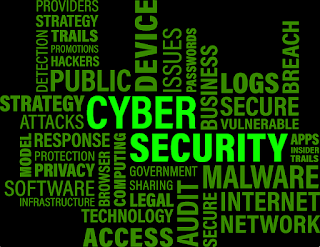Cyber Security Basic Terms and Concepts
Irrespective of your role in an organization, You must know the fundamental of cybersecurity terminology that are compiled for everyone from the security professional to the general end-user.
Here, you’ll find definitions of terms commonly used in the cybersecurity industry. Grab the opportunity to understand the cybersecurity domain and expand your wings.
Let’s have a look at the most common terms and concepts one by one.
Anti-spyware software: The software searches and removes spyware. Spyware is software that collects information from a system and sends it to its own server. Spyware typically works silently without harming the system resources. Anti-spyware software needs the latest engine and anti-spyware definitions to provide contemporary protection to the system.
Firewall: It is a software or hardware device that is configurable to allow genuine network traffic to go and stop the malicious traffic. For instance, a firewall software may intercept all network packets sent to the user’s browser. If these packets originate from a known malicious source, the firewall drops these packets to stop any harm to the user’s system.
Updates: These include new versions of programs, new engine versions, new definitions newer program databases, etc. Updates are pushed by software vendors often for software like operating systems, antivirus software, anti-spyware software, and other applications. We should keep all our software updated for security purpose.
Login name and User name: Login name is the string with which a system identifies the user internally. Login name may or may not be the same as the User name. The User name is a strength that the system displays to the user and communicates to other users. For example, john1202 may be a Login name and John Doe the corresponding User name. Now, the user would use john1202 to log into the system. However, the system would display John Doe in his inbox and in his messages.
Threat: It is a risk to someone’s or some organization’s information. Threats can be intentional. For example, an external attacker or the Threat can be accidental. For example, an earthquake or a flood.
Vulnerability: It is a deficiency in an individual’s or an organization’s systems. For example, if the hardware is located in an insecure place, it is a hardware vulnerability. Because the hardware may get stolen. If security testing is not done on the software, it may have software vulnerabilities. If the systems are located in a disaster-prone place, the systems have physical site vulnerability.
Penetration Test: It checks network security while pretending to be an external attacker. It is also called a pen test. It’s objective is to get access and some control on a device within the network. A pen test discovers the network’s vulnerabilities.
Authentication: This means finding if an entity or some data is genuine or not. For example, when a user logs in to a website, the website confirms if the user is genuine or not. The website can do this by checking the login name, password, previous activity, security token, any identification number, or biometrics.
Authorization: This means the grant of certain permissions. For instance, the system will allow a user to route transactions and modify his or her profile. However, if it is an inactive user, he or she may only activate their account, but cannot view their profile.
Identity: This means an individual’s unique data. For instance, an employee’s identity within an organization has Employee number, date of joining, and their full name. The employee uses their identity while working in the organization.
Environmental Security: This means an optimum working environment for a system. A secure working environment includes correct ambient temperature, stable work platform, and dust free and dehumidified air.
Physical Security: This means the physical protection of an organization’s information. For example, gated access, security guards, and access card required to enter the site.
Allowed IP address list: It is a list of specific IP addresses that are allowed to use a system. Other IP addresses cannot use that system. This can be more secure than only allowing users from specific geographical locations.
Internet Security Suite: This means the set of security products from a single software vendor. The security products may include antivirus, anti-spyware, anti-malware, spam protector, firewalls, and so on.
Site Advisor: This software works inside the browser to help the user visit only safe web sites. It warns the user if the user tries to navigate to a malicious web site.
Exploit: this can mean many things and exploit can be a set of commands or some data that an attacker may use against an information system to do some undesirable actions.
Cryptography: This means techniques for secure communications. These include using encryption algorithms or digital signatures. For instance, a website sends encrypted data to the browser. This data is first decrypted in the browser and only then displayed to the user.

